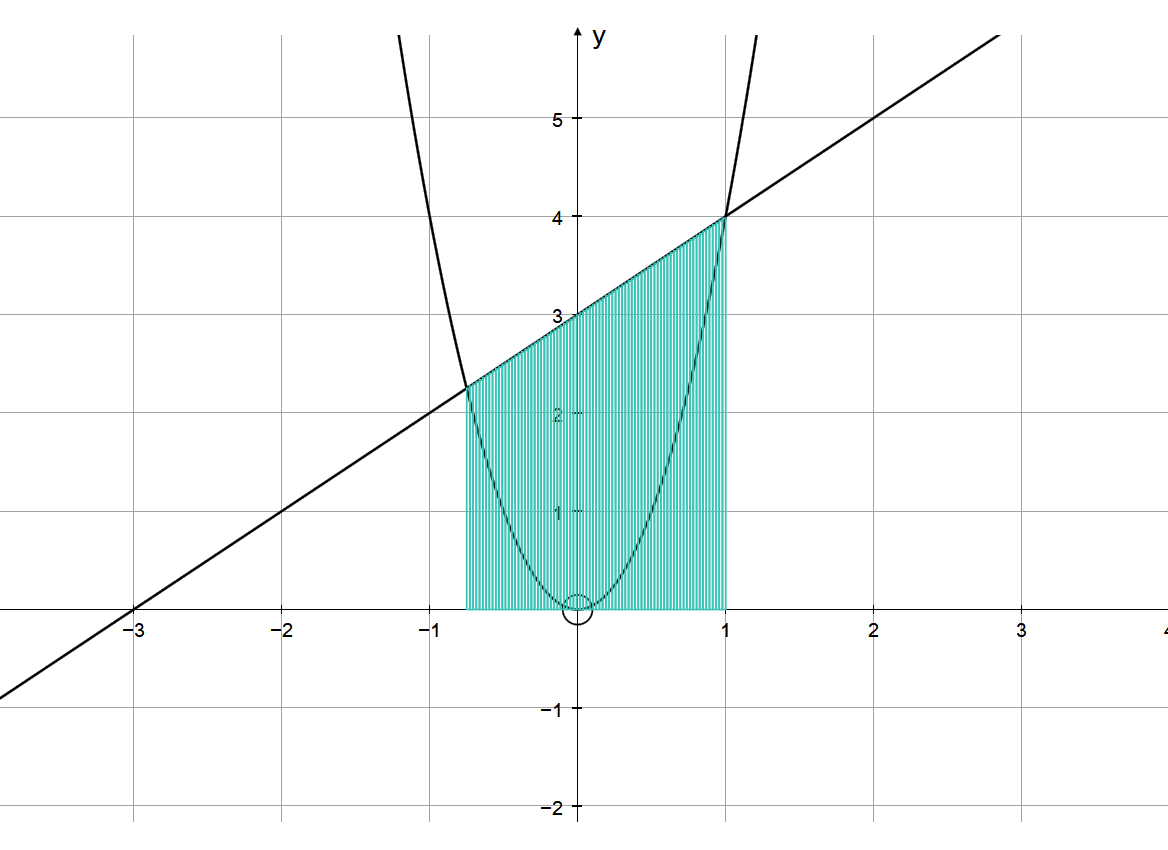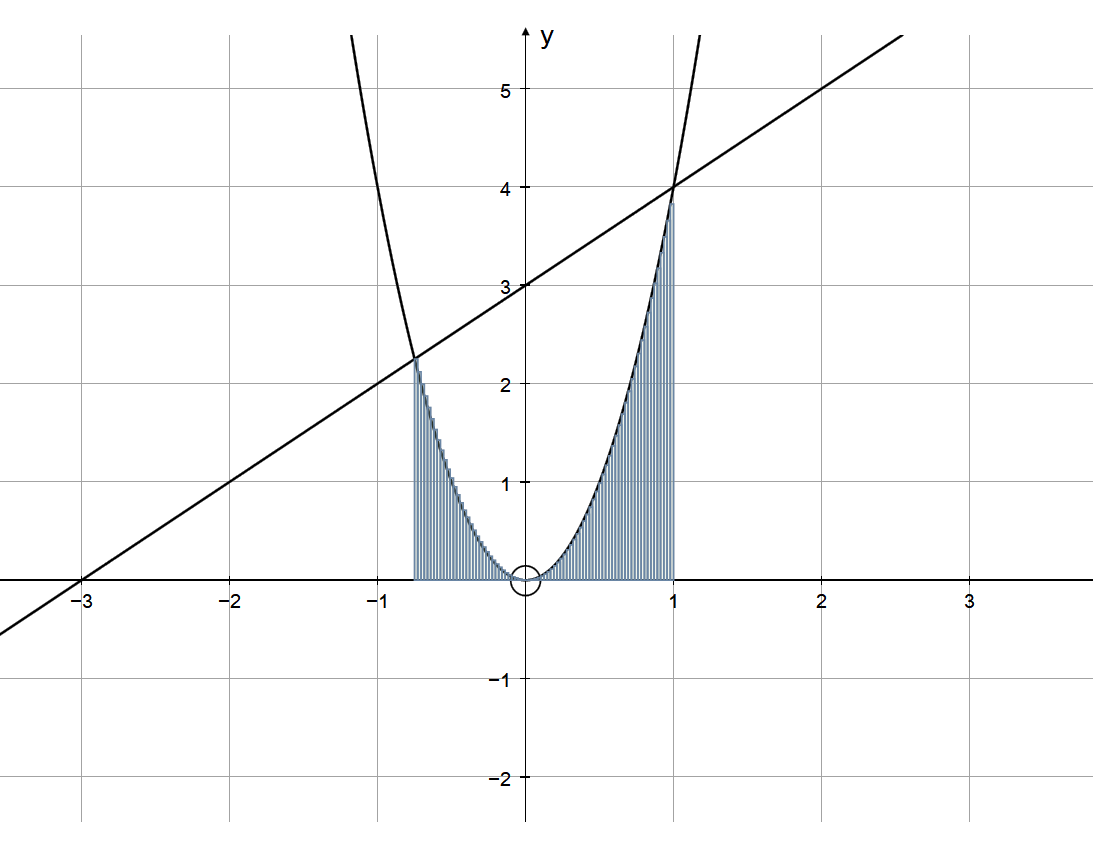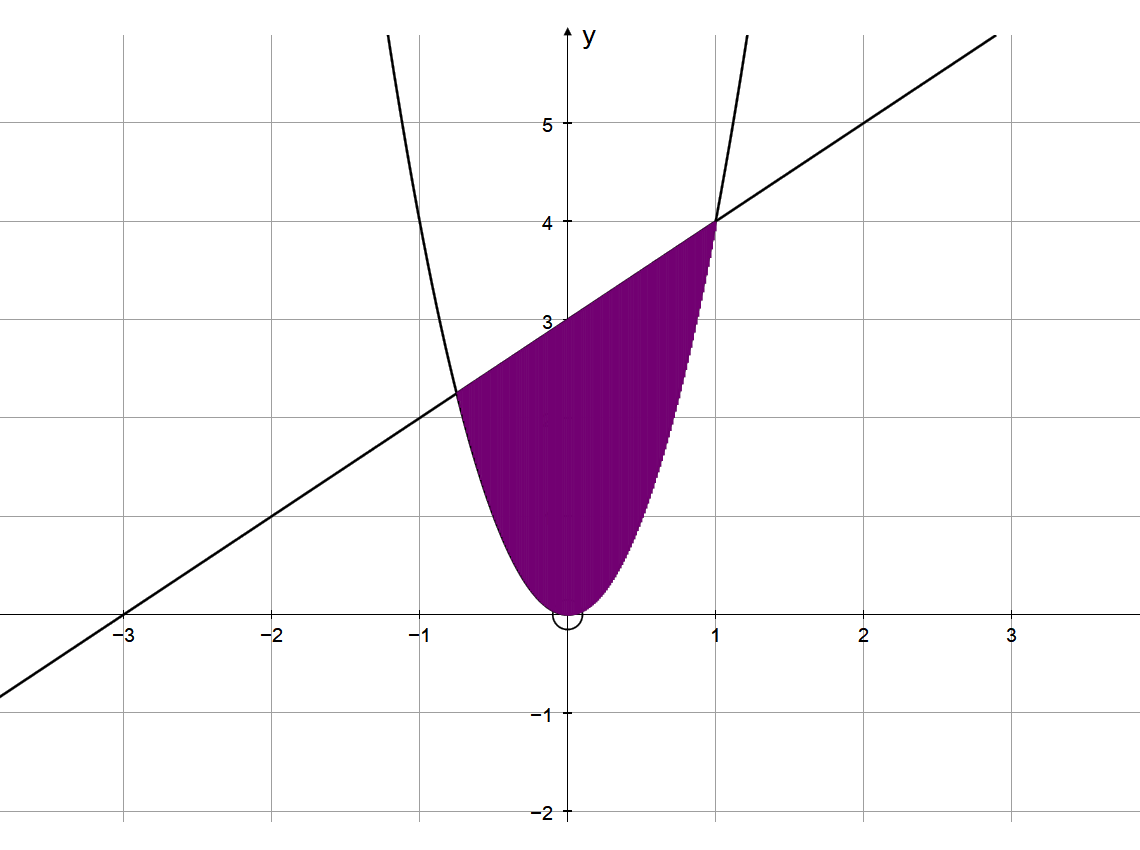

First we need to find the points of intersection of #f(x)=4x^2# and g(x)=x+3#
#:.#
#4x^2=x+3#
#4x^2-x-3=0#
#(4x+3)(x-1)=0=>x=-3/4 and x=#
These will be our lower and upper bounds of integration.
By observing the graphs above, we can see that, if we find the area under #g(x)# between the the bounds we just calculated and then subtract the area #f(x)# between these bounds, then we are left with the area between the curves. Since integration is distributive over the sum we can simplify things by subtracting #f(x)# from #g(x)# first.
#x+3-4x^2#
Integrate this:
#int_(-3/4)^(1)(x+3-4x^2)dx=-4/3x^3+1/2x^2+3x+k#
You can ignore the constant #k# this vanishes in calculating area.
Using the conventional method, we get:
#"Area"=int_(-3/4)^(1)(x+3-4x^2)dx=[-4/3x^3+1/2x^2+3x]_(-3/4)^(1)#
#=[-4/3x^3+1/2x^2+3x]^(1)-[-4/3x^3+1/2x^2+3x]_(-3/4)#
Plugging in the upper and lower bounds:
#=[-4/3(1)^3+1/2(1)^2+3(1)]^(1)#
#-[-4/3(-3/4)^3+1/2(-3/4)^2+3(-3/4)]_(-3/4)#
#"Area"=[13/6]-[-45/32]=343/96 " units"^2#
Final area plot:





